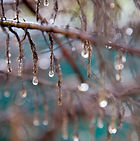
-
Lines of inquiry:
-
Forms and sources of energy
-
The transformation of energy
-
The various responsible uses of energy

cCentral idea:
Understanding of energy and forces can be applied to support human progress.
This unit is about an inquiry into the natural world and its laws; the interaction between the natural world (physical and biological) and human societies; how humans use their understanding of scientific principles;the impact of scientific and technological advances on society and on the environment.
Student learns about energy that used to create ability of working or doing something in this world. They learn types of energy, and different sources of it. The also explore how energy can be transform to produce forces. Then, they have to think of the connections to the environment, as this unit relates to science.
CONCEPT?
What is it?
FORM CHANGE
RESPONSIBILITY

Strand: Science
forces and energy; forms of energy (Potential: chemical, mechanical, nuclear, gravitational and electrical. Kinetic: radiant, thermal, motion and sound); transformation and conservation of energy; and physicsI

Related concepts: forms, transformation and conservation of energy, physics
HOW THE
WORLD WORKS


HOW DO WE LEARN:
PROVOCATION:
Students are provoked by asking them to read some books related with Force and energy. Then we discuss about what we are going to learn in this unit. Explain the central idea and lines of inquiry is a base for them to tune in to the unit and link them into their own experiences or prior-knowledge.
We provide them with 4 classes of provocation:
-
How is energy being used in each activity?
-
Where does the enrgey come from?
-
How does energy relate to force in the activities?

http://www.wonderville.ca/asset/save-the-world (responsibly use)
http://www.energyhog.org/pdf/ScavengerHunt.pdf
http://www.sciencemuseum.org.uk/onlinestuff/games/energy_flows.aspx (energy transformation online game)
http://energyquest.ca.gov/story/chapter01.html (information about forms and sources of energy)
http://www.eia.gov/kids/energy.cfm?page=1 (information about forms and sources of energy)
http://www.energyhog.org/childrens.htm (information about forms and sources of energy)
Homework week 1
Wednesday:
http://energyquest.ca.gov/story/chapter01.html (Chapter 1: Energy - What Is It?)
Thursday:
https://www.brainpop.com/science/energy/potentialenergy/ (potential Energy)
https://www.brainpop.com/science/energy/kineticenergy/ (Kinetic Energy)



What happens in the classroom?
To tune in students into the topic, giving them a time to discuss and brainstorm about some related words is beneficial. They can do it in English and Bahasa Indonesia. Then, we give them sort of flashcards and they need to match to the meaning. However, they have to get to know and understand the meaning by doing construct their own meaning after watch some movies, read books, search form internet and from share knowledge among them.
EXPERIMENT:
Students are encouraged to do some experiment to prove their understanding of the knowledge they have learned. The ideas can come up from books or internet, or they can try their own ideas.
First of all, they watch the video, and have some discussion how to run the experiment. They have to deal with Sceintific Method and the FLowchart.

Students need to know the steps to do the experiment appropriately. THey are going to be assessd as they run the experiment and report it. THe scientific method is taught, starting from making questions. Questions has been taught before these unit after they watch the video about an experiment. We analyze together, starting from the questions that might come up before the experiment. Asking them to explain their background knowledge that lead them into a question or an inquiry more about.





Use different variables is new things for the forth graders. This experiment is proofing different things based on the variable the students choose.
-
The length of the strings
-
The diameter of the parachutes
-
The weight of objects
-
The height of the palce they drop the parachutes.
Summative Task!
Students work in partner to do an experiment. They have to decide the purposes based on the energy they like to observe and proof, then they need to come up with the conclusion that tells them what energy works on that activity, depends on 3 differemt variables.